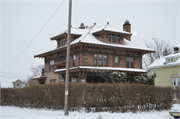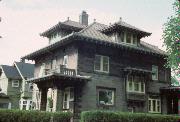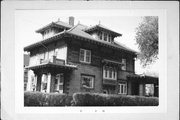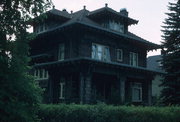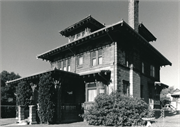Property Record
1704 HAMMOND AVE
Architecture and History Inventory
| Historic Name: | E.H. WHITNEY HOUSE |
|---|---|
| Other Name: | |
| Contributing: | |
| Reference Number: | 17625 |
| Location (Address): | 1704 HAMMOND AVE |
|---|---|
| County: | Douglas |
| City: | Superior |
| Township/Village: | |
| Unincorporated Community: | |
| Town: | |
| Range: | |
| Direction: | |
| Section: | |
| Quarter Section: | |
| Quarter/Quarter Section: |
| Year Built: | 1911 |
|---|---|
| Additions: | |
| Survey Date: | 19752019 |
| Historic Use: | house |
| Architectural Style: | American Foursquare |
| Structural System: | |
| Wall Material: | Concrete Block |
| Architect: | |
| Other Buildings On Site: | Y |
| Demolished?: | No |
| Demolished Date: |
| National/State Register Listing Name: | Not listed |
|---|---|
| National Register Listing Date: | |
| State Register Listing Date: |
| Additional Information: | A 'site file' exists for this property. It contains additional information such as correspondence, newspaper clippings, or historical information. It is a public record and may be viewed in person at the Wisconsin Historical Society, State Historic Preservation Office. ORIENTALIZED FOUR-SQUARE HAS A CONCRETE BLOCK FIRST STORY AND A RUSTICATED RE-BRICK SECOND STORY. Edward Whitney built this handsome concrete-block Craftsman house, with Oriental influences, to showcase his contracting firm’s work and its new building materials. Ambrose Foster of Portland, Wisconsin, first patented concrete block in 1855, but the material became popular only after 1900, when Harmon Palmer patented the cast-iron block-making machine. Soon hundreds of companies across the nation were producing concrete block with these hand-operated presses. In 1910, Whitney Brothers contractors produced its first pre-cast concrete blocks, bricks, and shingles. By using colored sand and interchangeable face-plates in the molds, the company created various hues and surface textures. Concrete block has often been associated with drab, utilitarian construction, but Whitney combined this inexpensive material with ornate details, including several stained-glass windows. The house is a two-story cube, with light-gray concrete blocks below and reddish slumped-concrete bricks above. Charcoal-gray concrete quoins tie the walls together, and similar blocks laid in a Flemish bond outline the windows. The use of concrete extends to the low-pitched roof, covered with concrete mission tiles. Concrete ridge crestings accentuate flared eaves to give the roof a pagoda-like flavor. Elaborate rafter tails vaguely resemble stylized dragon’s heads, and similar details repeat along the dormers, the bay and oriel windows, and the porch roofs. Block piers with large scrolled brackets support the off-center porch, with a spindle balustrade of concrete. Even the rear garage is ornate, mimicking the house. Above the concrete-block walls, concrete bricks tinted in light, medium, and dark colors are laid in a diagonal pattern. A pagoda-like hipped roof with a hipped lantern crowns the composition. Matching garage to the rear of the property. |
|---|---|
| Bibliographic References: | Buildings of Wisconsin manuscript. |
| Wisconsin Architecture and History Inventory, State Historic Preservation Office, Wisconsin Historical Society, Madison, Wisconsin |

